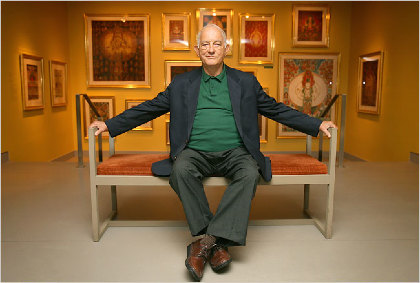- country:USA
- region:Hawaii
- style(s):Tibetan, Traditional
- label:Nonesuch Records, others
- artist posted by:African Hypertext LLC
The David Lewiston Archives consist mainly of tape recordings of the world's traditional music and photographs of musicians, dancers, and the milieus in which they live. These recordings of music were made in South and Central America, Indonesia (primarily in Bali), in numerous Himalayan venues (Darjeeling and Sikkim in the East Himalaya; in the West Himalaya, Jammu, Kashmir, Lahul, Ladakh, Gilgit and Hunza, Chamba, the Kangra Valley, the Kullu Valley) and in Nepal. Extensive recordings were also made of Tibetan rituals at remarkable refugee monasteries resettled in India.
1. The tape recordings of the world's traditional music, some 400 hours in all, are roughly half analogue and half digital. The analogue recordings were made between 1966 and 1983, and the digital recordings, between 1987 and 2000.
1A. The analogue recordings have now been digitised to a high standard, a sampling rate of 176.4kHz at 24 bits. To provide redundancy, these digital transfers exist as WAV files on three forms of media -- LTO streaming tape, computer hard drives, and DVDs. For long-term protection, the original field recordings and one set of the digital transfers have been consigned to the Library of Congress. We retain the second set of transfers.
The next step in preparing these analogue recordings for dissemination will be to convert them to CD music format -- 44.1kHz at 16 bits. To do this, the WAV files have to be opened in a computer configured as a Digital Audio Workstation, equipped with a high-quality sound card (Lynx, RME or Marian preferred), a suitable professional audio processing programme (we use Samplitude) and a way of listening to the recordings (we prefer headphones over loudspeakers, because they reveal every detail of the recordings). Such a setup makes it simple to turn the high-resolution digital transfers into the 44.1kHz CD format.
Then the 44.1kHz versions must be listened to in detail, and needed editing performed. At the present time, less than 20 hours of material have been brought to this point. So some 170 hours of music still needs to be edited in the same way, with 44.1kHz CDs made for daily listening.
1B. The digital recordings exist in two forms, PCM recordings on VHS videotapes, and as DAT recordings.
PCM technology consisted of a "black box" which accepted an analogue audio signal at either mic or line level, converting it to a digital equivalent that video recorders saw as just another digital signal. In the field David Lewiston used both a battery-powered Sony PCM-F1 and a mains-powered Sony ES501, recording the digital signal on two portable commercial-grade Panasonic 8420 VHS video recorders, using two different brands of video tape, so that if one recording turned out to be unusable, the other would be acceptable.
Processing PCM recordings: In the mid-'90s David Lewiston transferred this material to DAT, so the needed processing will be done from these DAT copies. While the material was recorded either with the regular CD sampling rate, 44.1 kHZ, or at close to this rate (44.056 kHz), the DAT transfers contain features that have to be removed during processing, namely "overs" caused by overloading of the digital circuitry, another signal balance problem called DC Offset, and using De-emphasis to reverse the equalisation used during recording, which resulted in high frequencies being too loud. All of these steps are easily accomplished in the computer after the recordings have been transferred from DAT to hard drive.
The DAT recordings were made from 1994 to 2000.
The 1994 recordings were made using the HHB Aiwa Pro portable recorder, which employed a sampling rate of 48kHz. So after transferring the recordings to the computer, they have to be re-sampled from 48kHz to 44.1kHz. If "overs" are detected, they have to be removed using the audio editing programme. If "overs" are detected, they have to be removed using the DAW programme.
From 1998 to 2000 David Lewiton used an HHB Portadat for field recording, using the 44.1 kHz sampling rate. As with the Aiwa Pro recordings, "overs" have to be identified and removed. Many of these recordings were made using the Mid-Side microphone technique; in order to produce regular stereo versions, the originals have to be converted in the computer.
Thus far, roughly 30 hours of the digital recordings have received this initial basic processing, leaving some 170 hours to be similarly dealt with.
1C. The real work of archiving will only be able to begin when all the recordings have been transferred to the CD format. David Lewiston and associates under his supervision will have to listen to every recording carefully, and create a detailed textual description, In many cases, copies of the recordings will have to be sent to the places where the field work took place, to get pertinent local information. Only when every piece of music on every recording has been dealt with in this way will the archive be complete.
2. Photographs. David Lewiston took an estimated 12,000 photographs, both colour transparency and black-and-white, during his travels, depicting musicians and dancers, and their milieus. There are at least 1,000 significant images which should receive high-quality scanning. 8000 dpi scans made using Imacon equipment will be required.
3. Only when these processes have been completed will it be possible to offer the recordings online -- though there is no reason why a particular set of recordings could be groomed and then offered to those interested, followed by successive sets.



